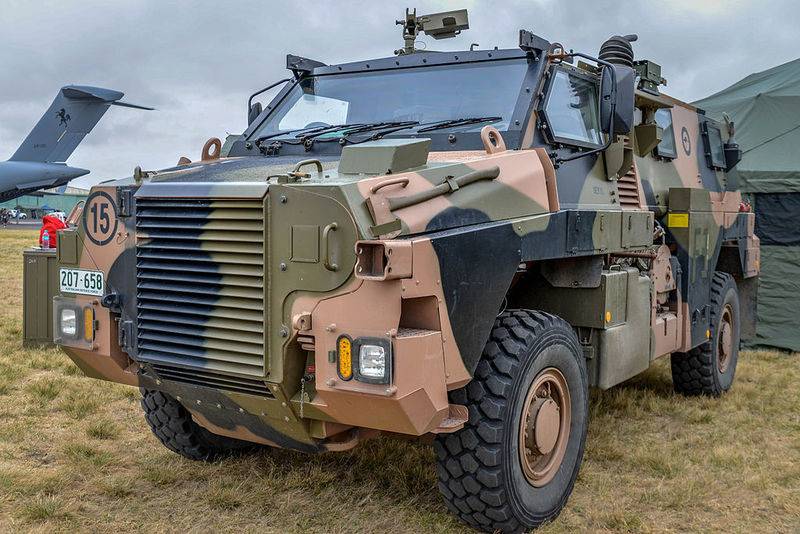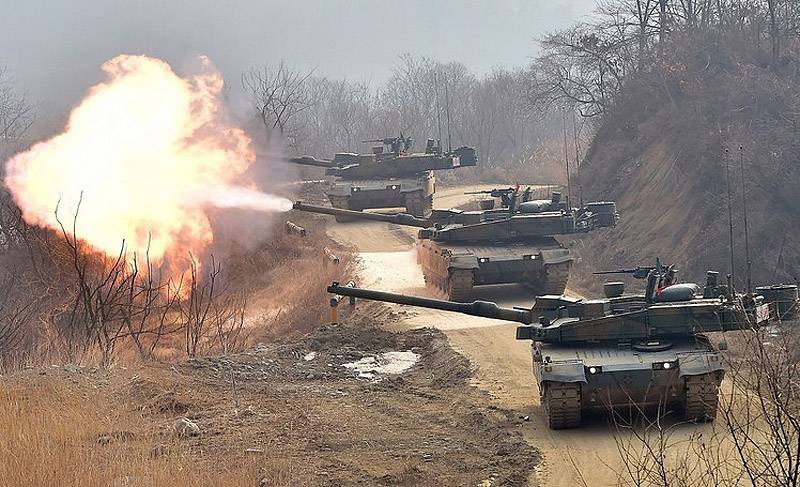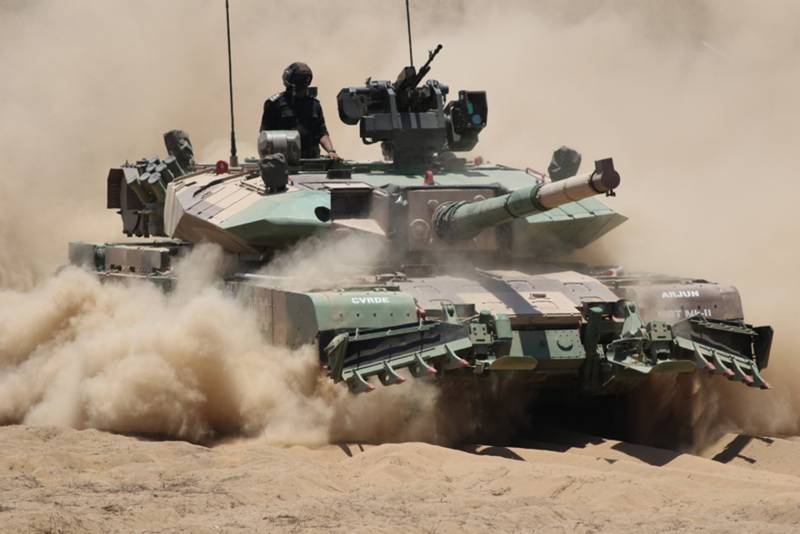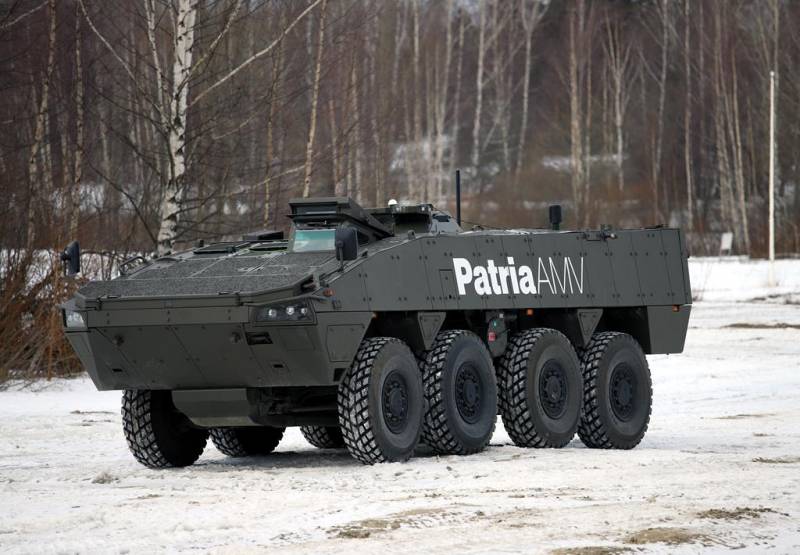The hard way of armored
When designing armored combat vehicles (BBMs), it is necessary to integrate numerous subsystems from different suppliers, in particular, the power unit (engine and transmission), suspension and chassis (wheel or tracked), steering and brakes, ballistic protection, weapons, a tower or remotely controllable weapon module, communication system, fire control system, sight / optocoupler systems, ergonomic seats, protection against weapons of mass destruction, heating and air conditioning system, ammunition, self-defense systems and wind nick.
Since the end of the 90's, the trend towards replacing tracked vehicles with wheeled vehicles has intensified, one of the obvious examples of this process is the Stryker armored vehicle of the American army. However, this trend was later partly weakened, as the military recognized the superiority of heavier tracked vehicles in protection and firepower. Of course, machines of such categories as BMP and MBT, for example, are at the top of BBM design, but on the other hand, their development is an extremely complex process.
Creating a good car is not easy
In each BBM project, designers have to build a triangle with three interdependent parties: firepower, mobility and protection. This makes the design of such platforms a kind of complex professional task, which is also based on rapidly changing source data.
It would be possible to get something similar to the BBM by simply adding steel sheets to the truck chassis, but creating the right platform that meets the highest standards is a completely different matter. For example, designing a carrier chassis is much more complicated than developing a conventional chassis. Welding armored steel is another highest art, specialists who are able to perform this work with high quality cannot appear at the click of a finger, a lot of effort and money needs to be invested in their preparation. This is why technology transfer agreements are typically part of a complete procurement contract, as developing countries seek to acquire these competencies.
In the world market, there are currently many AFVs available, including vehicles of the MRAP category (with increased protection against mines and improvised explosive devices). But, unfortunately, the production of MRAP platforms goes beyond the capabilities of many countries. But there are exceptions, for example, Panus Assembly is going to enter the global MRAP market with its Phantom 380X-1 platform. This 19 ton machine is already in operation in the Thai Marine Corps. Chaiseri Metal and Rubber, another MRAP machine manufacturer in Thailand, has produced more than 100 First Win 4x4 machines today, and Malaysia has also purchased a modified version under the designation AV4.

However, many countries are eager to develop their own independent projects when it comes to BBM, but not always the desires coincide with the possibilities. A striking example of how programs can work poorly, despite the efforts of the state, is India with its a tank Arjun. The program began in the 70s of the last century, and since then this tank has gone through countless stages of development and testing. However, to date, only 124 of these tanks have been adopted by the Indian Army.
After another December test, the Indian army adopted an updated version of the tank and now wants to order the 118 MBT Arjun Mk IA, the production of which is likely to begin before the end of the 2019 year. The new version includes 14 major changes, including an automatic target tracking, automatic transmission and improved suspension. However, the Mk IA is still only an intermediate model, since the modernized version of the Mk II will be ready for production in only 2021 or 2022.
However, the prototype Mk II, which implements 72 improvements in comparison with the original Arjun tank, has too much 68,6 tons and therefore its reduction is necessary. The Indian army demanded to finalize the hull and tower and achieve this. The defense research and development organization reluctantly agreed to reduce the mass by 3 tons, but the army is not at all convinced that this will bring any result and improve the tactical mobility of the tank.
According to foreign parts suppliers, unfortunately, many Arjun tanks operating in the army had problems with a lack of spare parts. For example, in 2016, 75% of Arjun tanks went down due to technical problems. This is a slightly amusing situation, since for a tank that was conceived as an entire Indian project, less than 30% of its components were ultimately manufactured by local industry.
India is also currently pondering its two major BBM programs. The first, a project for the promising Future Ready Combat Vehicle worth $ 4,5 billion, with the goal of replacing the locally developed MBT. Second, a project worth $ 2,8 billion for the promising BMP Future Infantry Combat Vehicle, which should replace the BMP-2.
Custom service
If a country without an existing BBM infrastructure has an irresistible desire to develop its own platforms, it is necessary to consider engaging a specialized company offering military vehicle design services.
One such renowned service provider is Timoney, an Irish suspension and transmission company. Timoney spokesman Simon Wilkins said:
The company also deals with power units, gearboxes, axles, steering, braking systems and chassis, analysis of the dynamic characteristics of vehicles, as well as the full integration of machine subsystems. Wilkins said Timoney could offer a complete design process or act as a subcontractor, explaining that “there is no approved turnkey scheme for a machine development project.
- continued Wilkins.
Some of the famous projects appeared on Timoney's drawing boards, for example, the Australian Bushmaster, the Singapore-based tracked Bronco and the wheeled Teggeh 8x8 and the Taiwanese Cloud Leopard 8x8. Wilkins said: “We continue to work with leading manufacturers in many countries and over the past few years we have supported companies such as Lockheed Martin, Hanwha Defense, Yugoimport and RT Pindad. Different operators have more than 4000 vehicles with our technology in service. ”
Technology transfer and licensing are obviously very important to Timoney’s business model. She does this on five continents, although, according to Wilkins,
He explained:
Regarding the cost-effectiveness of a country creating its own new BBM, Wilkins noted the following:
Wilkins also noted:

Manufacturing license
The Malaysian program for the production of 257 armored vehicles AV8 Gempita 8x8, based on the Pars machine of the Turkish company FNSS, clearly shows how the country can acquire its own capabilities through technology transfer and licensed production. Malaysia decided to start local production of the AV8 model at the facilities of the local DefTech company.
However, Malaysia has entered into subcontracting agreements with a number of unique suppliers of various systems. Thales and the joint venture Sapura Thales play a key role in the Gempita program, providing it with embedded communications, vetronic and combat control systems. The all-in-one camera system and driver's vision system are also provided by Thales, a recognized specialist in optoelectronics. For the reconnaissance option, this company supplied its Catherine Optoelectronic Station and Squire Surveillance Radar mounted on a telescopic mast.
Malaysia also adapted weapons systems to its needs, choosing the ZT35 Ingwe SAMP and ATGMs from the Denel catalog of the South African company. The missiles are mounted on a Denel ACT30 turret armed with an 30-mm cannon. Denel supplied 177 modular turrets (all assembled in Malaysia) and weapons systems for seven different AV8 variants. The AV8 Gempita has a Deutz engine and ZF transmission.
Although the AV8 model is based on the Pars machine, Malaysia has all intellectual property rights for export to other countries. In this regard, DefTech in the 2017 year in Saudi Arabia demonstrated the IFV25 option in the hope of expanding sales.
Back to Thailand. The Defense Technology Institute (DTI) is developing a Black Widow Spider 8x8 armored personnel carrier for the Thai army, as well as an amphibious armored personnel carrier for the Thai Marine Corps. AARS has a Caterpillar C9 engine coupled to an Allison automatic transmission. It is also equipped with a buoyancy kit, floats installed on the sides of the hull allow swimming at wave heights of up to 0,5 meters.
Another difference is the elongated housing between the second and third wheels and additional reservation. The roof of the hull is reinforced in order to withstand the mass of the roof and pullback forces.
An AARS armored personnel carrier weighing 24 tons was shown in 2017 with an uninhabited turret from ST Kinetics, armed with an 30-mm gun and a coaxial 7,62-machine gun. A representative of the DTI Institute said that AARS on 90% is unified with the Black Widow Spider machine. The latter is equipped with an uninhabited ST Kinetics turret armed with an 30-mm gun Mk44 Bush master II and a coaxial 7,62-mm machine gun.
This 8x8 machine program clearly illustrates why some countries are trying to set up their own BBM. The Thai military has a significant number of M113 armored personnel carriers, which need replacement and therefore the army is looking for an economical car that would meet these intentions. Despite the acquisition of Ukrainian BTR-3E1 and Chinese VN1, Thailand needs a cheaper car worth no more than 3,6 million dollars, which can, as DTI hopes, satisfy the needs of the military. However, bringing this machine to mass production is a technically rather complicated process and it remains only to guess whether the Thai military will invest in this Thai solution.
Consulting and engineering company Ricardo was included in the DTI list as a partner, while Singapore-based ST Engineering confirmed that it would work as a technical consultant and supply components if requested by DTI. Despite the fact that in the DTI documentation, the Black Widow Spider is similar to Singapore's Teggeh, the company insists that these projects were created independently. According to the institute, more than 60% of the components of the Black Widow Spider machine will be Thai-made.
The British company Riccardo is another specialist who offers BBM design services; his portfolio has a foxhound machine in the british army.
Probably, Singapore has the most high-tech BBM production facilities in Southeast Asia. After the development of Bronco and Teggeh machines with the assistance of Timoney, the latest ST Kinetics BBM is the next generation 29 tons combat vehicle, designated Next-Generation Armored Fighting Vehicle. The start of production of the machine in the BMP version equipped with Adder M30 SMD from ST Engineering is scheduled for this year.
However, in March, an image of a variant of the machine equipped with the Rafael Samson 30 SMPS (a modified version of the Samson Mk II module installed on the Bionix II BMP), armed with the 30-mm Mk44 Bushmaster II cannon, paired with it an 7,62-mm machine gun and a launcher with two rockets.
Collaboration work
Often close cooperation between parent enterprises and component suppliers takes place, and interesting alliances are formed. For example, the Australian company EOS developed its T2000 tower in collaboration with the Israeli Elbit Systems. An EOS spokesperson said the new product “is intended for overseas markets and has currently submitted applications for three tenders, one of which is the Australian Land 400 Phase 3 program.” Indeed, the T2000 was introduced at the South Korean Hanwha Defense AS21 Redback BMP proposed for Australia. The T2000 module can be armed with an 25-mm, 30-mm or 40-mm gun, as well as two Rafael Spike LR2 missiles in a rising launcher. The tower is available in a habitable or uninhabited configuration and can be equipped with Iron Fist active protection from IMI and IronVision from Elbit Systems.
Well-known in the defense industry, the Belgian company CMI Defense supplies its turrets and weapons to various leading manufacturers of armored vehicles. A company spokesman said, “The Cockerill 3105 turret with an 105 mm gun, a market leader, is designed for the light / medium tracked and wheeled segment. Currently, it is mass-produced and installed on the Kaplan MT medium tank from RT Pindad and the K21-105 medium tank from Hanwha Defense Systems. The Cockerill 3105 Tower was selected by SAIC for the US Army's new Mobile Protected Firepower program. ”
Of course, there is enough space for closer cooperation between the leading manufacturers of BBM. For example, a report by the RAND research corporation, “Opportunities for European Cooperation in the Field of Armored Vehicles,” states that “... There is a significant degree of fragmentation of armored car holdings in Western Europe. Approximately 37000 vehicles are made up of 47 tracked vehicles of various families and wheeled vehicles of more than 35 vehicles of various families. This contributes to the excess capacity in the European defense industry relative to the size of the European market and worsens industrial cooperation, consolidation and integration of supply chains. ”
The report identifies 18 manufacturers of armored vehicles, of which only 8 export products to other countries. Market saturation has led to a landmark consolidation, such as the merger of KMW and Nexter in 2016. Head manufacturers need to focus on exports in order to maintain business profitability.
The RAND report suggests that joint modular upgrades (for example, new engines and improved protection) of existing armored vehicles can lead to lower 52-59% costs for BBV owners. Meanwhile, joint purchases of finished products can save buyers 20-25%.
On the other hand, the joint development of a new platform could be 26-36% cheaper due to cost savings on
Green future
Advances in civilian hybrid automotive technology and recent EU environmental directives are boosting alternative energy research activities. A new joint European research project called HybriDT (Hybrid Drive Trains for Military Vehicles) is an example of a shift in emphasis.
Multinational efforts
Negotiations are underway with companies under the HybriDT contract with the prospect of its issuance in the 2019 year. The initiative was put forward by the European Defense Agency (EOA) terrestrial systems working group.
The one-year project will evaluate the practicality of using a hybrid propulsion system in military ground vehicles with a particular focus on hybrid drives. As the representative of the EEA explained, during its implementation, in addition, the volume of necessary additional developments will be checked to eliminate potential technological gaps, taking into account the specific requirements of the military. The Agency has reserved about $ 1,1-2,2 million for the project.
Germany is expected to lead this project, which will bring together Austria, Finland, France, Italy, the Netherlands, Slovenia and Sweden. However, the EOA said that for other countries the opportunity remains to join the program at later stages.
The HybriDT project is an example of swift and significant changes in propulsion systems for military vehicles. The representative of the EOA explained that “the armed forces should include hybrid and electromobile aspects in their long-term plans for the development of military vehicles.”
Civic influence
In the European Union, legislation stimulates the development of hybrid and electric drives in the civilian sphere, as a result, there is growing interest in the design of such drives for military equipment.
In recent years, the European Union has issued numerous environmental documents aimed at reducing emissions from civilian vehicles, such as Real Driving Emissions and World Harmonized Light Vehicle Test Procedure, issued in 2017; tax exemptions have also been adopted for owners of cars with low-toxic engines. Commercial companies, therefore, responded by investing more in R&D on low-toxic vehicles, and the technology of hybrid drives and electric motors has now become of interest in the military.
As explained by the representative of the EEA, EU states
One such country is Slovenia. “The development of technology in the civilian automotive industry will have a huge impact on mobility in the military sector, in all areas of operation - on land, sea and land. Future long-term development of vehicles will largely take into account the process of transformation of the civilian industry, ”said the representative of the Slovenian Ministry of Defense.
The representative of the Finnish company Patria Land Systems explained:
Patria Land Systems is the representative of Finland in a joint project of the EOA.
Driving force of design
Changing environmental legislation in the EU also aims to influence the industry for the production of military equipment directly.
The representative of the Dutch Ministry of Defense noted that, having the prospect of a ban on the production of diesel engines in Europe in the 2030-2040 years, military organizations are forced to study other types of power plants, since today diesel engines are the foundation of all military combat and auxiliary equipment.
The representative of Patria added:
Hybrid drive technologies that companies hope to borrow from the civilian industry are changing. “There are many different technologies available on the civilian market, but the real question is how the military wants to use this hybrid technology and this, of course, is having an impact.”
One of the defining characteristics of any project is the preservation of the capabilities of the machine.
In any promising project, it is also necessary to take into account technical support for the entire period of operation, as well as completely different operating conditions in which these machines will work. When will these technologies become commonplace in the military? This will depend on the results of the HybriDT project.


Information